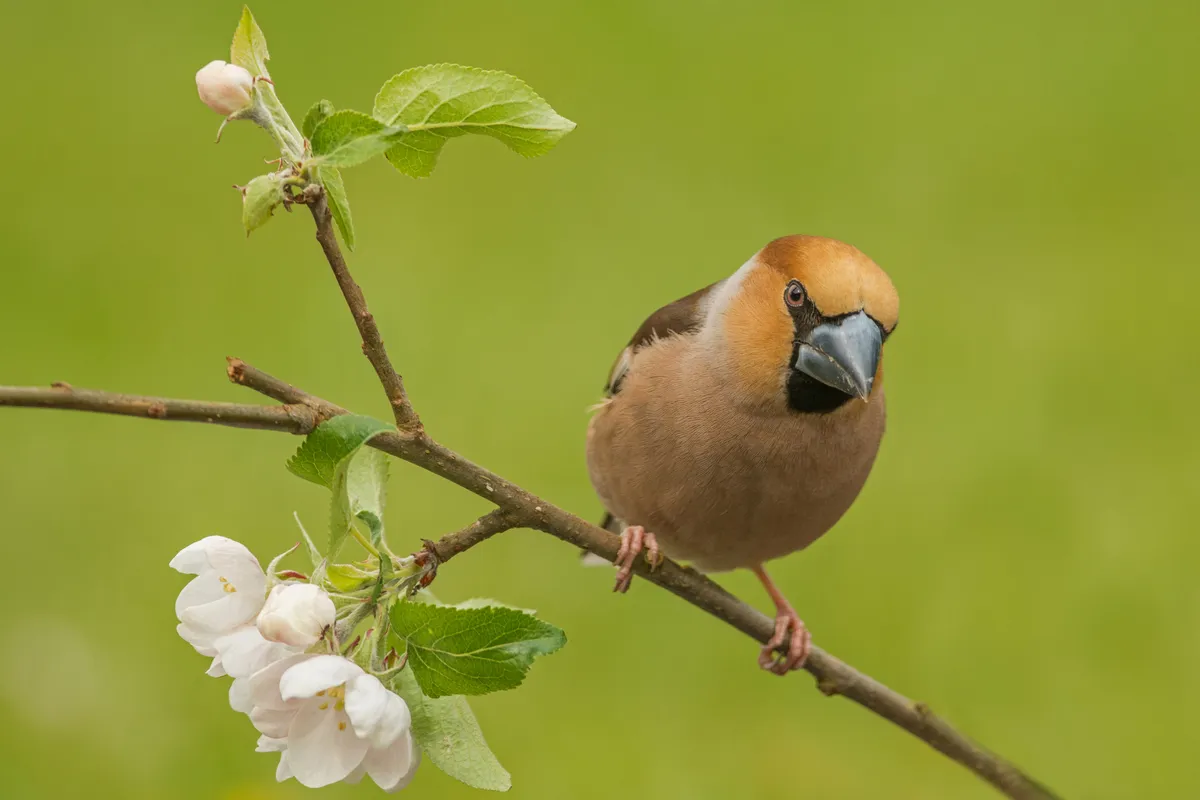Hawfinches are the UK’s largest finch species and have massive bills powerful enough to split even cherry stones. The species enjoys a near-mythical status among birdwatchers, being among the hardest of all British birds to spot.
Where to see hawfinches
Hawfinches are tied to large stretches of mature woodland that – crucially – have a good mix of tree species.
Encounters with hawfinches aren’t easy, since these scarce, shy birds spend most of their time in the treetops. The hawfinch wasn’t recorded as a breeding species in the UK until the 19th century, when a small colony became established in Epping Forest, Essex.
The species is red-listed in the UK, meaning that conservation charities are concerned about the UK’s population of them.
This shy species is hard to survey so may be under-recorded, but in 2011 its British population was estimated at just 800 pairs. Its four main strongholds are the Forest of Dean/Wye Valley, New Forest, North Wales and Cumbria.
Hawfinches are more common in the Baltic States and eastern Europe, where they regularly visit bird tables in winter. So if you’re of an optimistic nature, you could accumulate a supply of cherry stones in summer to put on your feeding station in winter – you never know,
you might just get lucky.
How to identify hawfinches

Hawfinches are very wary of people, and most sightings tend to be of a thick-set, orange-hued bird with white wingbars and tail tip disappearing into the distance.
The hawfinch flight call is a staccato ‘tick’, like a song thrush or robin. It’s a good way to locate these elusive birds, so is worth learning. The species featured on BBC Radio 4’s Tweet of the Day programme, presented by Martin Hughes-Games.
What do hawfinches eat?
The hawfinch’s powerful beak has a serrated lining, so it can grip hard fruit stones like a pair of pliers, exerting tremendous pressure until the seedcoat cracks and releases the kernel. Like a miniature parrot, the hawfinch can exert tremendous pressure with its jaw muscles and conical bill – equivalent to 150 pounds per square inch.
From July, the ground below wild cherries will be littered with stones from fallen fruit, so keep an eye on your local trees and you might be rewarded with a nice sighting of a feeding finch.
The birds love to feed on cherry, holly and plum stones, beechmast, ash ‘keys’, and seeds of hornbeam, elm, yew and hawthorn.
